
Sample Sources
The sources below are those contained in our three curated collections—covering themes of Passover, Gender Roles, and Holocaust Resistance. They represent a fraction of the thousands of sources that will be available when the full site launches in 2024.
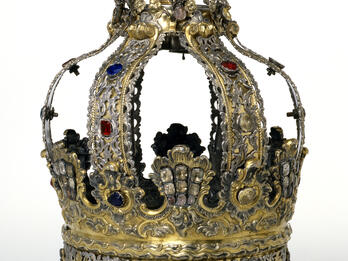
Torah Crown (Poland)
This partially gilt-silver Torah crown from Poland is studded with semi-precious stones. Its two-tiered base is typical of Torah crowns from Eastern Europe. It is inscribed in Hebrew with the words,…
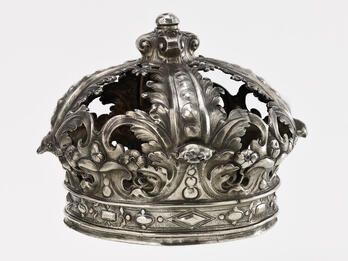
Torah Crown (Amsterdam)
This Torah crown from Suriname was made originally in Amsterdam by Evert van Heerdan (active 1644–1683). It is a fine repoussé piece exemplifying the mastery of Dutch silverwork. Inscribed on the…
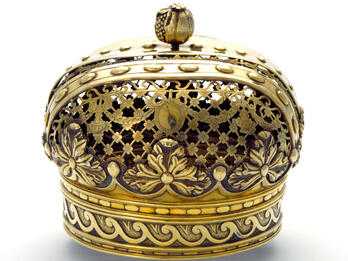
Torah Crown (Amsterdam)
The purpose of the Torah crown is visually to augment the status of the Torah scroll, emphasizing its importance and centrality to Jewish life. These magnificent silver ornaments are placed over the…
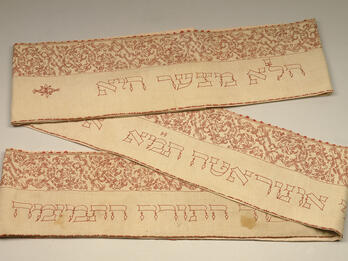
Torah Binder (Italy)
This Torah binder is one of the earliest examples from Italy. The binder (also known as a wimpel) was intended to accompany the male child through his lifetime, through the stages of his circumcision…
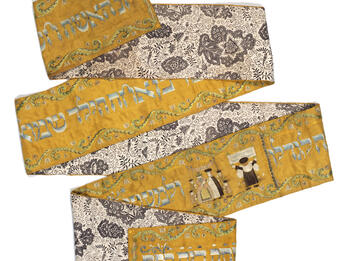
Torah Binder (Rechnitz)
This richly decorated Torah binder is thought to be from Rechnitz, based on its dedication as a gift from Gitl bat Samuel for Samuel ben Leib of Rechnitz in 1750. The Torah binder (also known as a…
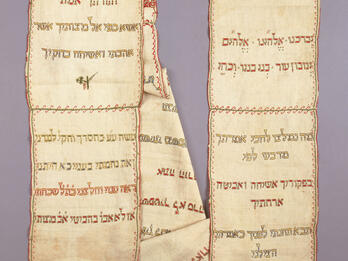
Torah Binder (Italy)
The Torah binder (also known as a wimpel) was intended to accompany the male child through his lifetime, through the stages of his circumcision, bar mitzvah, and wedding. This linen Torah binder from…
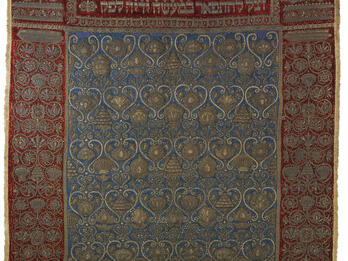
Torah Ark Curtain (Prague)
Made in Prague, this Torah ark curtain is exquisitely ornamented with embroidery of silk, silk velvet, and metallic thread. Set against a vivid red background, its borders and central panel are…

Torah Ark Curtain (Kriegshaber)
This splendid Torah ark curtain, made in Kriegshaber, Germany, is the work of the embroiderer Elkana Schatz Naumberg of Fürth, whose name appears in an inscription in the central bottom section. It is…

Torah Ark Curtain (Israel)
Each of the four-sided shapes on Siona Shimshi’s Torah ark curtain represents a Jewish holiday, except for the one at left (second from top) with an image of hands arranged for a priestly blessing…
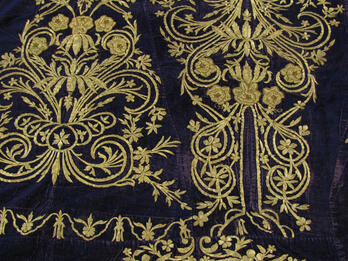
Torah Ark Curtain from Woman's Dress
This sumptuous velvet and gilt-metal-thread embroidered Torah ark curtain most likely began its life as the wedding gown of a well-to-do Jewish woman of the Ottoman Empire. It was unstitched and…
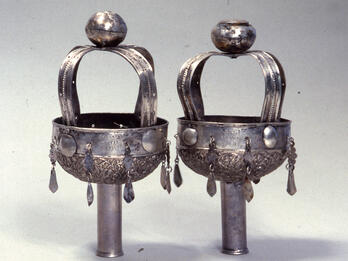
Torah Finials (Kerala)
These silver, crown-shaped Torah finials engraved with an okra floral motif are from the Paradesi Synagogue in Kerala, India. A Hebrew inscription (divided into four parts) reads: “The honorable R…
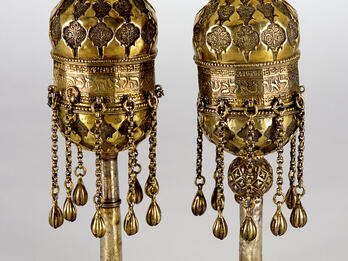
Torah Finials (Iraq)
These gilt-silver finials—which bear the Hebrew calendar year of 5502 (1742)—are considered the earliest dated finials from Iraq. On top of each finial is a miniature ḥamsa, a charm in the shape of a…

